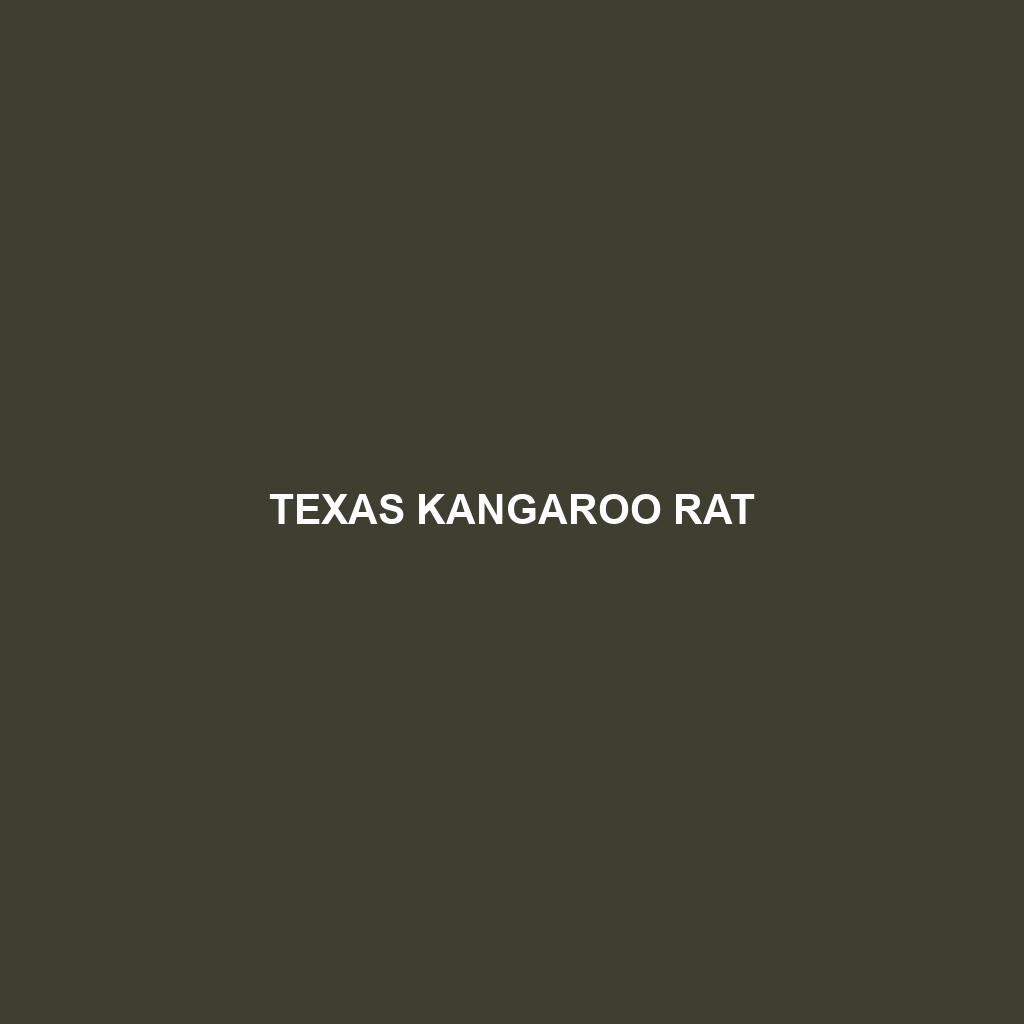Texas Kangaroo Rat: A Unique Rodent of the Southwest
Common Name: Texas Kangaroo Rat
Scientific Name: Dipodomys elator
Habitat
The Texas Kangaroo Rat is primarily found in the arid regions of western Texas and parts of New Mexico. Preferring sandy soils and open grasslands, these rodents are commonly seen in the deserts and scrub habitats that make up the Chihuahuan Desert ecosystem. Their nests are typically constructed in burrows underground to escape the heat and harsh conditions of their environment.
Physical Characteristics
Texas Kangaroo Rats are medium-sized rodents, measuring approximately 10 to 12 inches in length, including their long, tufted tails. They are characterized by their soft, sandy-colored fur, which aids in camouflage within their natural habitat. Their large hind legs are adapted for powerful jumps, while their long ears provide excellent hearing capabilities to detect predators. An identifying feature is their long, tufted tail, which helps with balance during their leaps.
Behavior
These nocturnal creatures are most active at night, engaging in foraging and social interactions under the cover of darkness. Texas Kangaroo Rats are known for their unique locomotion; they often move in a series of rapid jumps, allowing them to escape swiftly from threats. They are also territorial, marking their burrows with scent to ward off intruders. Additionally, they exhibit a fascinating behavior known as “sitting-and-waiting,” where they remain still and blend into their surroundings to prevent detection by predators.
Diet
The diet of the Texas Kangaroo Rat primarily consists of seeds, grains, and various plant materials. Their strong cheek pouches allow them to transport food back to their burrows for storage. Common food sources include the seeds of grasses and shrubs found in desert environments. This dietary habit not only sustains their energy needs but also plays a vital role in seed dispersal, benefiting their ecosystem.
Reproduction
Texas Kangaroo Rats typically breed in spring and early summer, with a gestation period of about 30 days. Females can give birth to 2 to 6 young per litter, which are born blind and helpless. As the young mature, they remain in the burrow, learning survival skills from their mother. Weaning occurs around 3 weeks, after which the juveniles begin to venture out and forage independently.
Conservation Status
Currently, the Texas Kangaroo Rat is classified as vulnerable due to habitat loss and degradation from agricultural expansion and urban development. Conservation efforts are critical to maintaining their populations, as they are a key species in the arid ecosystem of the southwestern United States.
Interesting Facts
Texas Kangaroo Rats are capable of surviving without drinking water, extracting moisture from the seeds they consume. Their remarkable adaptations to the harsh desert environment make them fascinating examples of survival and resilience. Additionally, they can leap distances up to 6 feet, which is an impressive feat for a rodent of their size!
Role in Ecosystem
The Texas Kangaroo Rat plays a significant role in its ecosystem, serving as both a prey species for various predators, including owls and snakes, and as a seed disperser. By storing seeds in their burrows, they contribute to plant regeneration and help maintain the health of their desert habitat. Their presence indicates a balanced ecosystem, as they are integral in supporting food chains and promoting biodiversity.
